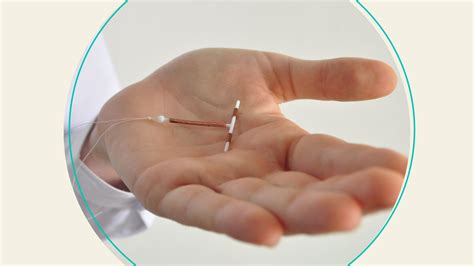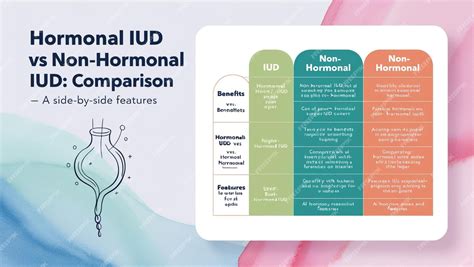Intro
Discover non-hormonal IUD options, including copper IUDs, for effective birth control without hormones, offering a safe and convenient alternative with minimal side effects, suitable for women seeking hormone-free contraception methods.
The use of Intrauterine Devices (IUDs) has become increasingly popular as a form of long-acting reversible contraception. Among the various types of IUDs available, non-hormonal options have gained significant attention due to their potential to provide effective contraception without the use of hormones. This aspect is particularly appealing to individuals who experience hormonal side effects or prefer a more natural approach to birth control. The importance of understanding non-hormonal IUD options cannot be overstated, as it empowers individuals to make informed decisions about their reproductive health.
The need for diverse contraceptive options is underscored by the varied needs and preferences of individuals. While hormonal IUDs are effective for many, they may not be suitable for everyone due to potential side effects or personal preferences. Non-hormonal IUDs offer an alternative that can cater to a broader range of needs, making contraception more accessible and acceptable. The significance of non-hormonal IUDs also lies in their potential to address concerns related to hormonal therapies, providing a sense of security and well-being for those who opt for them.
As the landscape of reproductive health continues to evolve, the demand for effective, safe, and user-friendly contraceptive methods grows. Non-hormonal IUDs are at the forefront of this evolution, offering a promising solution for individuals seeking a hormone-free contraceptive option. The appeal of these devices is not only in their efficacy but also in their convenience, as they provide long-term protection against pregnancy without the need for daily or weekly maintenance. This convenience factor, combined with the lack of hormonal side effects, positions non-hormonal IUDs as a highly desirable option for many.
Introduction to Non-Hormonal IUDs

How Non-Hormonal IUDs Work
The mechanism of action of non-hormonal IUDs is distinct from their hormonal counterparts. Instead of releasing hormones to prevent ovulation or thicken cervical mucus, non-hormonal IUDs rely on the spermicidal properties of copper. When a copper IUD is inserted into the uterus, it begins to release copper ions, which alter the uterine environment in a way that is hostile to sperm. This alteration prevents sperm from reaching and fertilizing an egg, thereby preventing pregnancy. Additionally, the presence of the IUD itself may cause a mild inflammatory response in the uterus, which further contributes to its contraceptive effect by making the environment less conducive to implantation of a fertilized egg.Benefits of Non-Hormonal IUDs

Types of Non-Hormonal IUDs
While the copper IUD is the most well-known non-hormonal option, there are different types available, each with its own characteristics and duration of use. These include: - **ParaGard**: A popular copper IUD approved for use up to 10 years. - **GyneFix**: A frameless copper IUD that consists of small copper tubes attached to a thread, which can be cut to the desired length.Insertion and Removal of Non-Hormonal IUDs

Removal of the IUD is generally a simpler process and can be done at any time. The healthcare provider will locate the strings of the IUD, gently pull on them to release the device from the uterus, and then remove it.
Common Misconceptions About Non-Hormonal IUDs
Despite their benefits, non-hormonal IUDs are often subject to misconceptions. These include concerns about: - **Pain and Discomfort**: While insertion may cause some discomfort, it is typically manageable and temporary. - **Effectiveness**: Non-hormonal IUDs are highly effective, comparable to or even more effective than some hormonal methods. - **Safety**: Non-hormonal IUDs are safe for most individuals, but as with any medical device, there are potential risks and side effects to be aware of.Potential Side Effects and Risks

Rare but serious risks include:
- Perforation: The IUD can puncture the uterus, although this is very rare.
- Expulsion: The IUD can be expelled from the uterus, often without the individual noticing.
Who Can Use Non-Hormonal IUDs
Non-hormonal IUDs are suitable for a wide range of individuals, including: - **Women Who Cannot Use Hormonal Contraceptives**: Due to health reasons or personal preference. - **Women Who Have Given Birth**: Non-hormonal IUDs can be inserted postpartum, offering a convenient and effective contraceptive option. - **Nulliparous Women**: Women who have not given birth can also use non-hormonal IUDs, although insertion may be slightly more challenging.Comparison with Hormonal IUDs

Future Developments in Non-Hormonal IUDs
Research into non-hormonal IUDs is ongoing, with efforts to improve existing devices and develop new technologies. Future developments may include: - **New Materials**: Exploration of new materials that could enhance the efficacy and comfort of non-hormonal IUDs. - **Improved Designs**: Designs that make insertion easier, reduce side effects, or enhance user experience.Conclusion and Next Steps

We invite you to share your thoughts and experiences with non-hormonal IUDs in the comments below. If you found this article informative, please consider sharing it with others who may benefit from this information. For those considering a non-hormonal IUD, we encourage you to schedule a consultation with a healthcare provider to discuss the potential benefits and any concerns you may have.
What is the most common type of non-hormonal IUD?
+The most common type of non-hormonal IUD is the copper IUD, such as ParaGard, which releases copper ions to prevent pregnancy.
How long does a non-hormonal IUD last?
+The duration of a non-hormonal IUD can vary depending on the type but typically ranges from 5 to 10 years, with some devices approved for use up to 12 years.
Can non-hormonal IUDs be used by women who have not given birth?
+Yes, non-hormonal IUDs can be used by nulliparous women (women who have not given birth). However, insertion may be slightly more challenging, and it's recommended to consult with a healthcare provider.
Are non-hormonal IUDs reversible?
+Yes, non-hormonal IUDs are reversible. Fertility typically returns quickly after the device is removed, although it may take some time for menstrual cycles to regulate.
What are the potential side effects of non-hormonal IUDs?
+Potential side effects include heavier menstrual flow, cramping, and spotting. Rare but serious risks include perforation and expulsion of the device.
